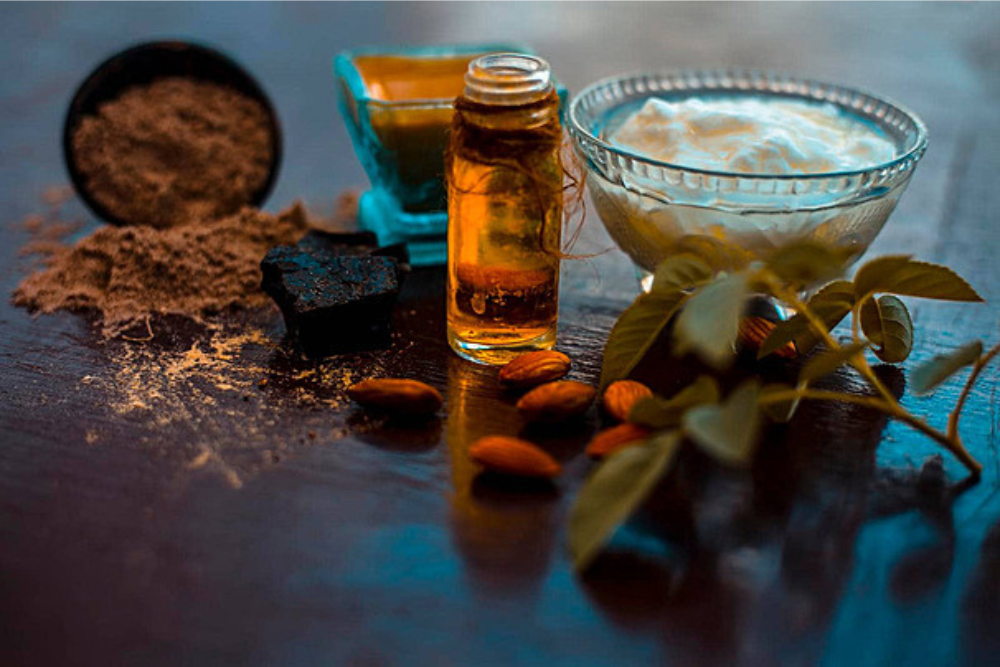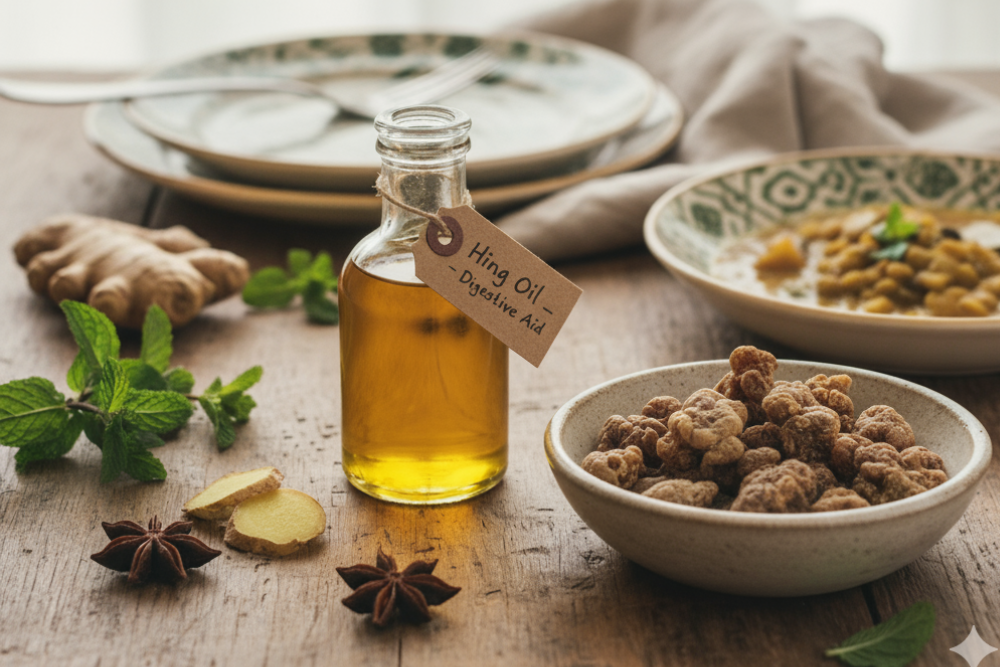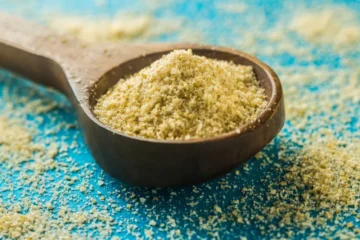Festive meals are full of joy, flavour, and often — indulgence! But when the celebrations end, bloating, heaviness, and sluggish digestion can take over. That’s where Hing Oil for Detox comes to your rescue. This traditional remedy helps reset your gut, reduce discomfort, and restore balance naturally.
What exactly is hing oil — and how is it different from regular hing powder or paste?
Short Answer :
Hing oil is an infused form of asafoetida, often blended with carrier oils like sesame or coconut. Unlike hing powder or paste, Hing Oil for Detox offers a milder yet effective way to promote digestion and relieve gas, both topically and in cooking.
Detailed Answer :
- Composition: Hing oil is made by infusing pure asafoetida resin into natural carrier oils. This makes it less pungent and gentler on the system compared to raw hing powder.
- Form & Usage: While hing powder or paste is mainly used for cooking, hing oil can be applied topically, inhaled, or even used in food preparation for therapeutic benefits.
- Digestive Benefits: The oil carries the digestive and anti-gas properties of hing but delivers them in a soothing, controlled way — perfect for post-festive detox and daily gut care.
How does hing oil help with bloating, gas, or heaviness after festive meals — is it backed by Ayurveda or science?
Short Answer :
Hing Oil for Detox reduces bloating, gas, and heaviness by stimulating digestive enzymes. Both Ayurveda and modern studies support its antispasmodic, carminative, and anti-inflammatory effects that help relieve post-meal discomfort naturally.
Detailed Answer:
- Ayurvedic View: In Ayurveda, hing (asafoetida) is considered a powerful “deepana-pachana” herb that kindles digestive fire (agni) and removes ama (toxins) from the gut.
- Scientific Evidence: Studies show hing’s active compound, ferulic acid, helps relax intestinal muscles, reducing spasms and gas buildup.
- Practical Benefits: Applying or ingesting hing oil improves digestion, minimizes post-meal heaviness, and restores balance after rich or oily foods common in festive feasts.
What’s the best way to use hing oil for detox — should I apply it, inhale it, or cook with it?
Short Answer :
You can apply, inhale, or cook with Hing Oil for Detox. Massage a few drops on your abdomen, inhale it with steam, or add a drop to warm water or your tadka — each method aids digestion and relieves post-feast discomfort.
Detailed Answer :
| Method | How to Use | Benefits |
|---|---|---|
| Topical Application | Mix 2–3 drops of hing oil with coconut oil and massage over your abdomen in circular motions. | Relieves gas, cramps, and improves digestion. |
| Inhalation | Add 1–2 drops to hot water and inhale the steam for 5 minutes. | Reduces nausea, supports detox, and clears bloating. |
| Culinary Use | Add 1 drop to ghee or oil for tadka or in warm water after meals. | Boosts digestion, enhances metabolism, and prevents gas formation. |
Each method complements your detox routine, ensuring flexibility and comfort based on your preference.
Is hing oil safe for everyone — can kids, elders, or people with sensitive skin use it?
Short Answer :
Hing Oil for Detox is safe for most people when diluted properly. Always perform a patch test before use. For children, elders, or those with sensitive skin, consult a healthcare expert and avoid direct undiluted application.
Detailed Answer :
- For Children: Use only a drop of hing oil diluted with 1 tablespoon of carrier oil. Apply lightly to the stomach to ease colic or gas.
- For Elders: Ideal for digestive discomfort but should be used in diluted form to prevent irritation.
- For Sensitive Skin: Always perform a patch test on the inner arm. If redness or itching occurs, discontinue immediately.
- General Caution: Avoid contact with eyes or open wounds. Pregnant women or those with medical conditions should seek professional advice before use.
Can I make hing oil at home — or should I buy a ready-made version for best results?
Short Answer:
You can make Hing Oil for Detox at home by infusing hing powder in sesame or coconut oil. However, ready-made hing oils from trusted brands like Hingwala offer consistency, purity, and convenience.
Detailed Answer :
- DIY Hing Oil: Heat ½ cup of sesame or coconut oil. Add 1 teaspoon of hing powder and let it infuse for 10–15 minutes on low flame. Cool, strain, and store in a glass bottle.
- Advantages of DIY: Natural, customizable, and cost-effective.
- Ready-Made Option: Buying from a trusted source like Hingwala ensures quality, proper dilution, and standardized strength ideal for safe detox and daily use.
- Best Practice: If you’re new to essential oils, start with a readymade version for accuracy and safety.
Conclusion
After festive feasts, your digestive system deserves gentle support — and that’s where Hing Oil for Detox truly shines. Whether you use it for massages, in your meals, or aromatically, this traditional remedy helps cleanse toxins, ease bloating, and restore natural balance. Embrace the power of hing oil to turn post-festive fatigue into lightness and renewed energy — naturally with Hingwala’s pure hing oil.





